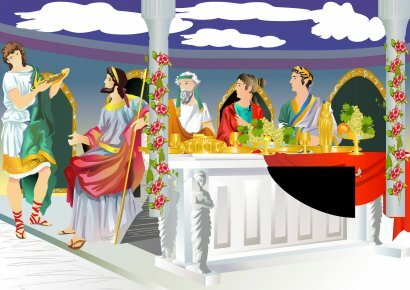October 12, Hispanic Heritage Day
Universal History / / November 13, 2021
On October 12, 1492, Christopher Columbus arrives on a new continent that has since been colonized. Later the knowledge of all this gave rise to a geographical globalization and later also an economic one. In the 15th century, every European nation tried to dominate the main trade routes thus dislodging its potential competitors. But there were many inexpensive spaces already closed. Currently on that date is celebrated in many countries of America, Hispanic Day or Columbus Day. Let's review the main events that happened:
In the course of the 15th century it was understood that Europe and Asia were divided by a great Dark Sea full of strange beings such as dragons and monsters that attacked the ships and devastated all the marine. As nothing was yet known about the American continent, the old maps of that time only recorded Europe, Africa and Asia.
In those times when myths and legends were more popular than scientists' own advances, it was not difficult to fantasize monsters in seas and oceans. Animals such as whales, sharks and walruses, which today are observed as curiosities, possibly added the fears of those navigators.
Christopher Columbus left the port of Palos aboard a ship called Santa María, along with the caravels La Niña and La Pinta. The caravels had been created by the Portuguese in the 15th century. They were agile ships, special for navigating shallow waters, which allowed them to approach the coasts to explore. The Santa Maria was a heavier and larger class of vessel.
Of the three ships, this was the only one that could not return from the first trip, since she was shipwrecked in the Caribbean Sea at the end of 1942. His remains were used to make La Navidad, the first of the Spanish forts in the New World. Columbus thought that it was possible to reach the Indies and Japan, then known as Cipango, where the desired spices and other riches came from. him sailing west instead of continuing the hitherto known route that encircled the coast of the African continent that was dominated by the Portuguese.
In 1483 King Juan II of Portugal did not accept the project that Columbus presented him to make this trip. Later and after many refusals, Queen Elizabeth I of Spain in 1942 was the one who decided to collaborate in such fearful audacity. Nobody imagined that the great navigator would arrive at an unknown continent, a new World that years later would be called America.
The American continent emerged for the first time called America in the book "Cosmographiae Introductio" written by the German-born cartographer Martín Waldseemuller. In it, his author pointed out the possessions of Spain of the islands of the Caribbean Sea, South and Central America, which he drew on the first map. that it existed, and that it called as a whole America in honor of the Florentine crew member in the service of the Spanish Crown, Américo Vespucio. Although it is true that Vespucci arrived in these lands later than Christopher Columbus, it was this navigator who was the pioneer in Europe in proposing that these lands were a different continent and not the Indies as Columbus thought at the time.



